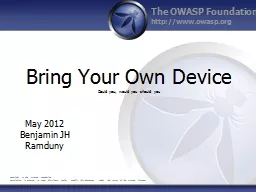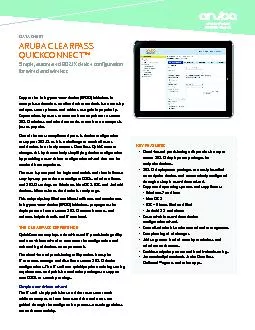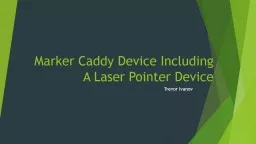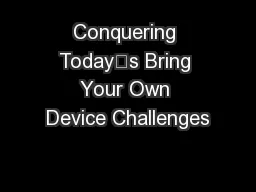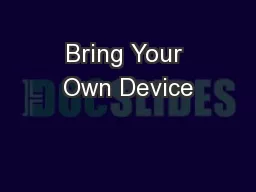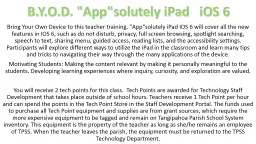PPT-Bring Your Own Device
Author : sherrill-nordquist | Published Date : 2020-01-09
Bring Your Own Device Could you would you should you May 2012 Benjamin JH Ramduny What is Bring Your Own Device BYOD We say that BYOD describes an end user computing
Presentation Embed Code
Download Presentation
Download Presentation The PPT/PDF document "Bring Your Own Device" is the property of its rightful owner. Permission is granted to download and print the materials on this website for personal, non-commercial use only, and to display it on your personal computer provided you do not modify the materials and that you retain all copyright notices contained in the materials. By downloading content from our website, you accept the terms of this agreement.
Bring Your Own Device: Transcript
Download Rules Of Document
"Bring Your Own Device"The content belongs to its owner. You may download and print it for personal use, without modification, and keep all copyright notices. By downloading, you agree to these terms.
Related Documents

